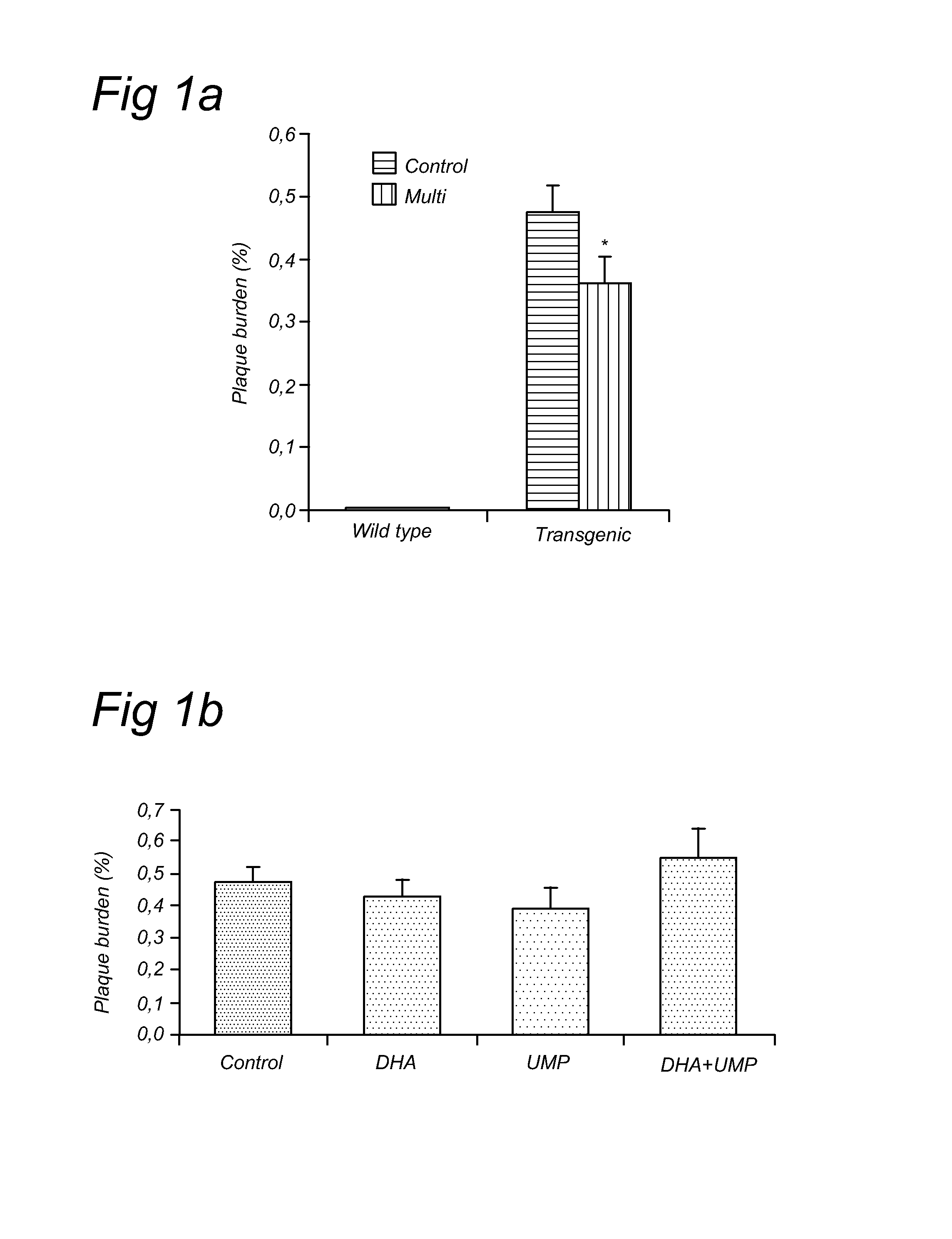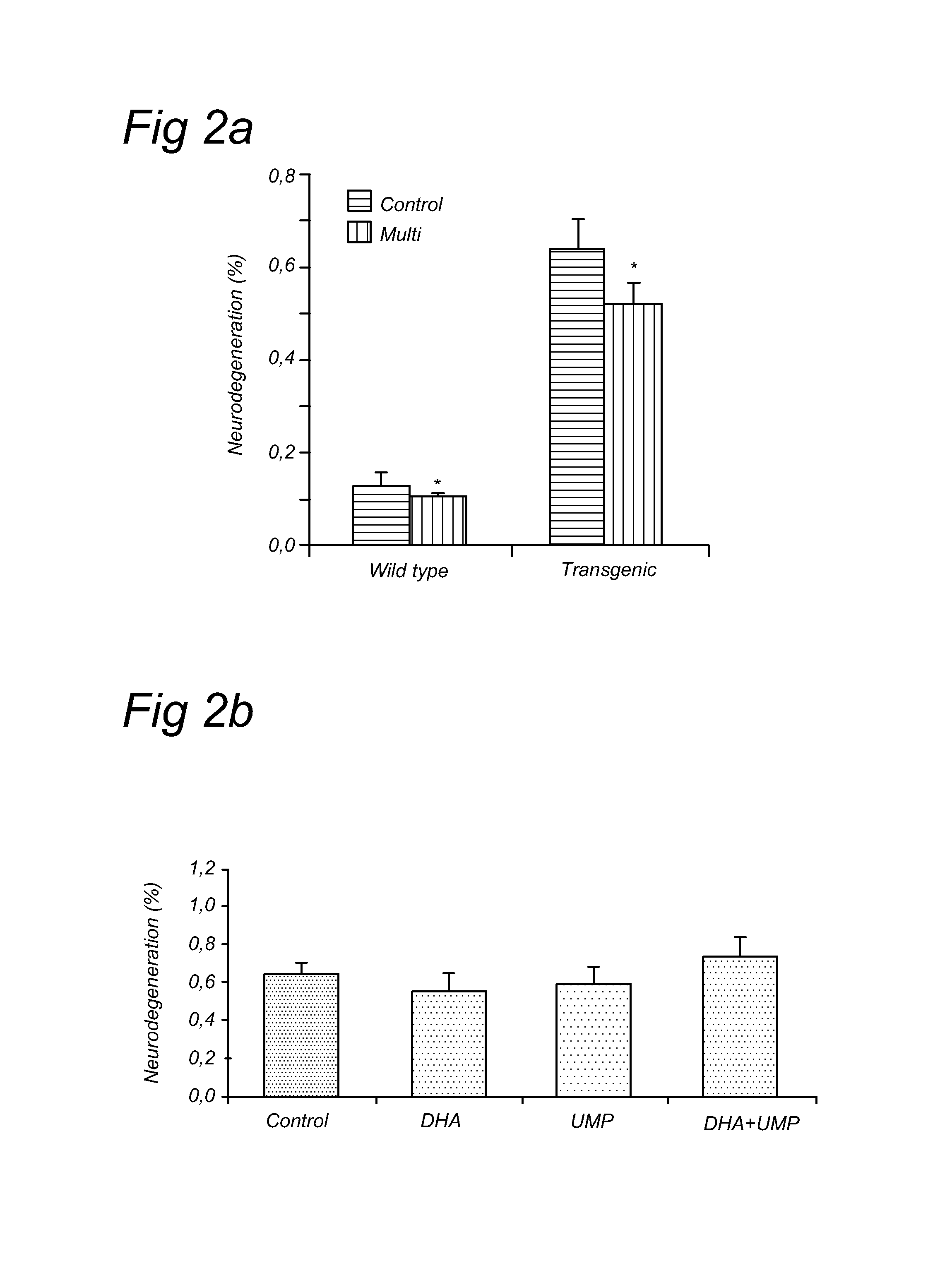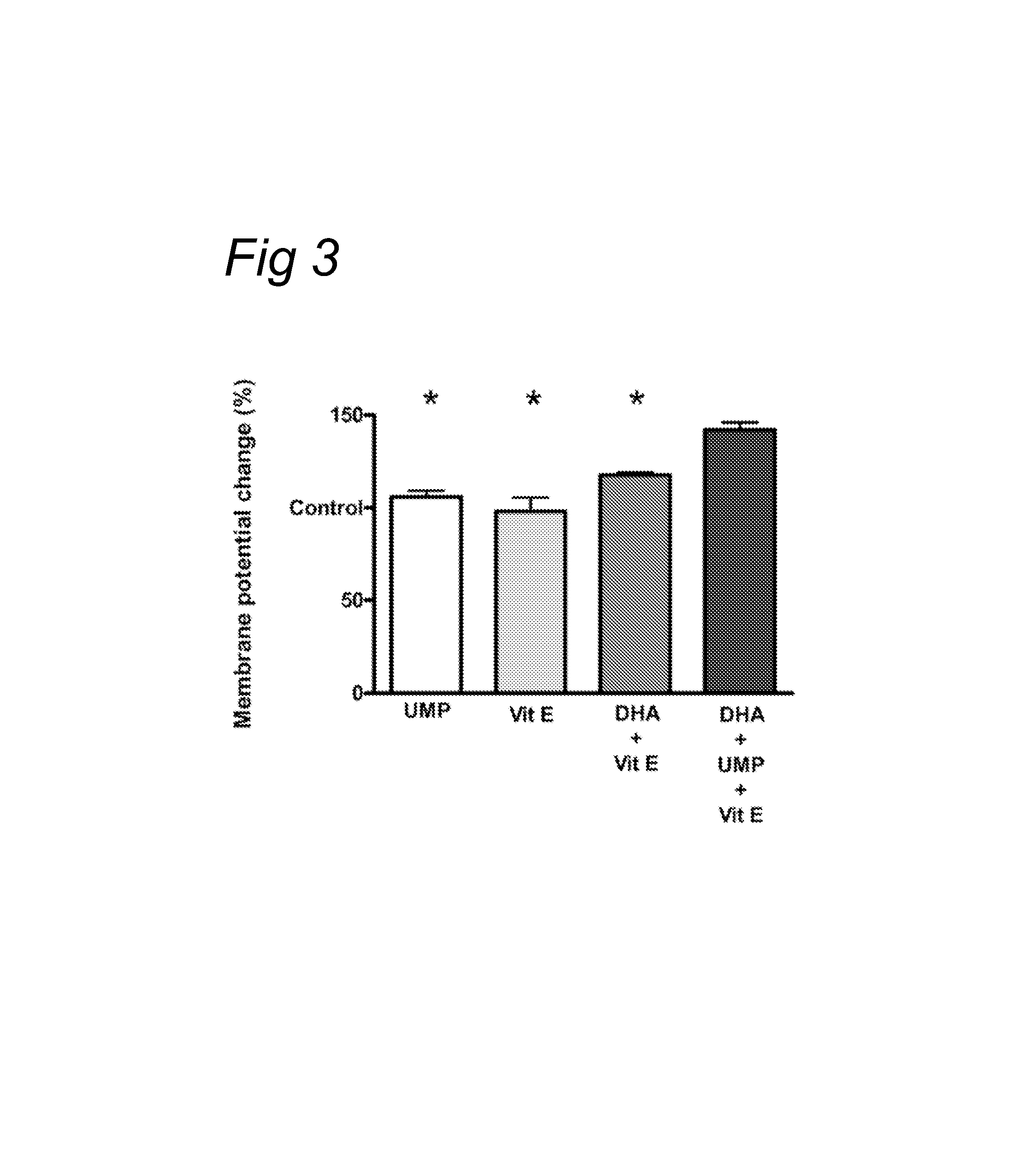Unit dosage for brain health
a brain health and dosage technology, applied in the field of brain health unit dosage, can solve the problems of insufficient intake of active ingredients, and insufficient effect in patients with reduced appetite or disturbed eating behaviour, so as to prevent memory decline and/or cognitive dysfunction, reduce the burden of abeta plaques, and effectively use
- Summary
- Abstract
- Description
- Claims
- Application Information
AI Technical Summary
Benefits of technology
Problems solved by technology
Method used
Image
Examples
examples
Capsule Composition
[0073]A capsule was prepared comprising a blend of 500 mg marine oils, comprising 60 mg docosahexaenoic acid. The amount of EPA was 90 mg. It included 150 mg uridine monophosphate and 6 mg alpha-tocopherol. All numbers were based on the dry weight of the capsule. The total weight of the capsule was 1.1 g. The capsule further contained glycerine, polysorbate 40, and calcium alginate.
[0074]One to four of these capsules were recommended daily for preferably more than one month.
experiment 1
[0075]The current experiment tested whether UMP, DHA, UMP+DHA and UMP+DHA+alpha-tocopherol could reduce abeta plaques and neurodegeneration in Alzheimer's disease (AD) model mice, the APP / PS1 mice. These mice start showing plaques in their brains as early as 4-5 months of age and are considered a good model for AD in scientific literature.
[0076]The mice were fed diets enriched in (1) UMP, (2) DHA, (3) UMP+DHA or (4) UMP+DHA+alpha-tocopherol starting at 3 months of age, just before the first plaques become apparent. The diets were fed for a period of 3 months until the age of 6 months. Thereafter the mice were sacrificed and their brains processed for abeta plaque analyses and neurodegeneration analyses. The brain was cut into thin slices using a vibratome and the slices were stained for abeta using an antibody recognizing human abeta and for neurodegeneration using the amino-cupric staining The total number of plaques in the hippocampus was counted and the total surface of the area ...
experiment 2
[0081]Alzheimer's disease is characterized by a loss of cognitive abilities which can be explained by a loss of communication between neuronal cells leading to a reduction in neuronal functioning and eventually neuronal cell death (neurodegeneration). Neuronal communication is dependent upon the connections (synapses) between neurons where neurotransmitters from the pre-synaptic neuron are released and bind to receptors on the post-synaptic neuron. Receptor function is an important factor in neuronal communication. By improving receptor function, neuronal cells would communicate more effectively which would be reflected by e.g. lower levels of a receptor agonist to induce the same level of stimulation.
[0082]In the experiment described below, neuronal pheochromocytoma cells (PC12 cells) were used to study the effect of incubation with nutrients (docosahexaenoic acid (DHA), uridine monophosphate (UMP), alpha-tocopherol (vitamin E) or combinations thereof) on receptor functionality.
[00...
PUM
| Property | Measurement | Unit |
|---|---|---|
| dry weight | aaaaa | aaaaa |
| weight | aaaaa | aaaaa |
| weight ratio | aaaaa | aaaaa |
Abstract
Description
Claims
Application Information
 Login to View More
Login to View More - R&D
- Intellectual Property
- Life Sciences
- Materials
- Tech Scout
- Unparalleled Data Quality
- Higher Quality Content
- 60% Fewer Hallucinations
Browse by: Latest US Patents, China's latest patents, Technical Efficacy Thesaurus, Application Domain, Technology Topic, Popular Technical Reports.
© 2025 PatSnap. All rights reserved.Legal|Privacy policy|Modern Slavery Act Transparency Statement|Sitemap|About US| Contact US: help@patsnap.com



